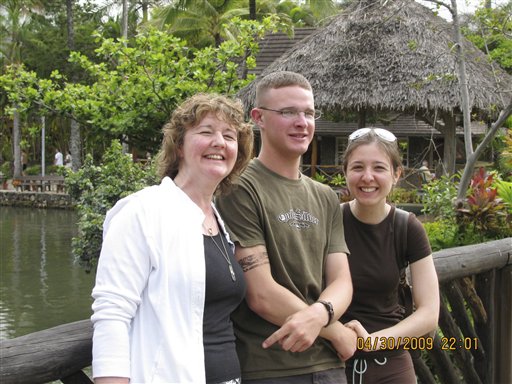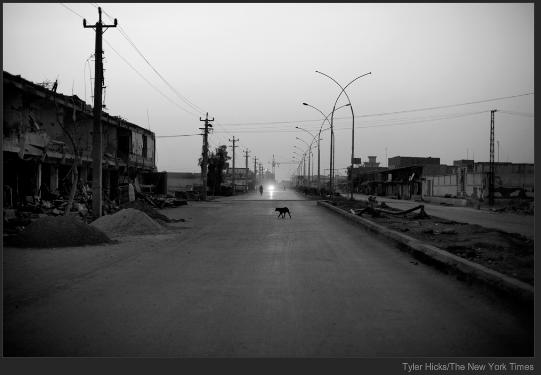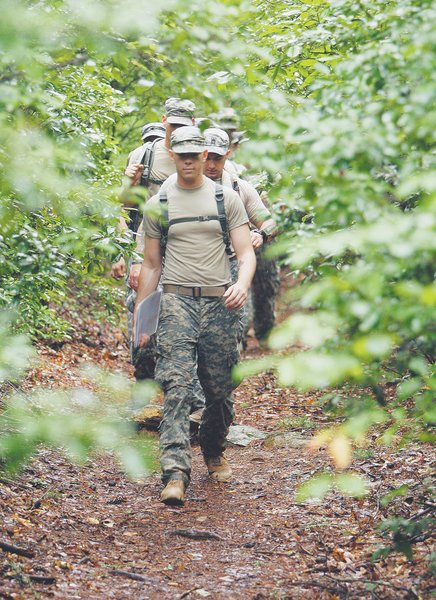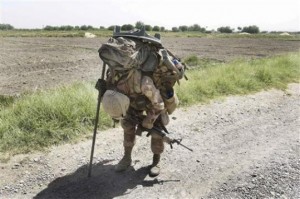Marines Bring Calm To Helmand
BY Herschel SmithOne of our favorite reporters, Tony Perry with the LA Times, brings us a report from the Helmand Province.
By Tony Perry
November 8, 2009
Reporting from Nawa, Afghanistan
When 500 U.S. Marines descended on this Taliban stronghold overnight, Afghan civilians were immediately suspicious about the intentions of the heavily armed Americans.
One question dominated all others: How long will the Americans stay? Five months later, there is still no clear answer.
“The No. 1 question the Marines get is: ‘When are you going home?’ ” said Brig. Gen. Larry Nicholson, an Iraq combat veteran and now the top Marine in Afghanistan. “They can’t believe we’re staying.”
Three battalions landed 4,500 troops in Helmand province in the early hours of July 2, the largest airborne assault since Vietnam.
But the long-term U.S. commitment to Helmand is unclear, as President Obama and Army Gen. Stanley McChrystal, the top commander in Afghanistan, continue to reevaluate U.S. strategy.
One issue is whether U.S. forces should be massed more closely to large population centers, including Kabul, the capital, which could mean depleting the forces in rural regions like Helmand.
In mid-June about 200 Marines arrived here to relieve a beleaguered British platoon. Days later, 500 more arrived in helicopters to establish a central base, called Geronimo, and then smaller ones, including Cherokee here in Nawa.
After 10 days of intense fighting, the Marines pushed Taliban fighters out of several small villages. The troops fanned out and announced to startled villagers that they had arrived to protect the population from the Taliban.
But a whisper campaign, which Marines blame on the Taliban, suggested that the Americans would leave as soon as President Hamid Karzai was reelected. The message was clear: Anyone who cooperates with the Americans is marked for death.
“They’re very hesitant to trust us, and I don’t blame them,” said Capt. Frank “Gus” Biggio, a Washington, D.C., lawyer and Marine reservist who heads a civil-affairs team in Nawa. “For centuries, they’ve seen foreigners come and go, promises made and broken.”
The 1st Battalion, 5th Regiment, which was assigned to protect Nawa, is set to return home to Camp Pendleton by Christmas. Advance elements of its replacement, the 1st Battalion, 3rd Regiment from Hawaii, have already come to be introduced to the elders and be seen in marketplaces and other gathering spots. They will be on a seven-month deployment.
The Marines have held numerous meetings with village elders to convince them that they will protect the community until Afghan security forces are strong enough to take over. In return, the Marines asked for information on Taliban fighters’ movements and methods, including roadside bombs.
Dusty, sunbaked Helmand is considered the insurgency’s heartland. A person who is helpful and friendly with the U.S. one day may be helping the Taliban the next, Marines said.
“There are no quick fixes here, no resting on your laurels,” said Lt. Col. William McCollough, commander of the 1-5. “It’s up one day, it’s down another day.”
In the 1960s, the U.S. poured millions of dollars into building canals to irrigate the province’s fields of corn, wheat and fruit trees.
Officials of the State Department and the U.S. Agency for International Development who arrived shortly after the Marines are planning to upgrade the canals, using local labor. They also hope that with more water, the farmers will not plant the opium poppies that supply the world heroin market and provide funds for the Taliban.
After the Marines arrived, Taliban fighters fled a few miles away to a community called Marja. The Marines have made no secret that, together with the Afghan national army, they plan to rout the Taliban from Marja in a sweep akin to that of the November 2004 battle of Fallouja, Iraq.
Nicholson, the Marine commander, calls Marja a “cancer in Helmand” that he is eager to eliminate.
Throughout the province — though not in Marja — Marines patrol daily, in Humvees or on foot, sometimes accompanied by Afghan soldiers. Marine civil-affairs teams, along with the civilian agencies, are working to win the confidence of villagers with small projects that hire local people to clear roads, take care of schools and build bridges.
The Marines are putting up plywood buildings to replace the hastily erected tents that house their troops, communication gear and other things. McCollough hopes the effort will thwart the village chatter about the U.S. leaving soon.
“In Afghanistan, that’s a permanent structure,” McCollough said of the buildings.
Though there may be anxiety about the future, everyday life for many people in Helmand has improved: Outside Nawa, the Taliban no longer has checkpoints on roads to extort money from people. A school, closed by the Taliban, is reopening.
The biggest change may be the flourishing marketplace. Under the Taliban, few storekeepers dared open lest they face extortion or punishment for selling Western goods.
But on Friday, dozens of stalls were open along two dusty streets, offering vegetables, fruit, candy, clothing, toys, motorbike parts and slaughtered chickens.
Several Afghans interviewed expressed differing opinions on whether the Americans would keep their promise not to leave abruptly. Some refused to talk about the Americans.
Nabi, 25, who goes by one name, has a U.S.-paid job clearing canals. He shrugged his shoulders when asked whether he thought the Americans would stay.
“I don’t know,” he said, with some hesitation. “Only God knows.”
This report has similar themes as those brought to us by Michael Yon concerning the permanence of structures and the desire (on the part of the Afghanis) to see the U.S. in the struggle for the long haul. As a sidebar comment, both of these accounts serve as defeater arguments for Matthew Hoh’s arguments that the Afghanis don’t want us in Afghanistan (as pointed out by commenter Davod). A counterinsurgency campaign is simply too complicated to sum up in a single line narrative, something that more maturity would have taught Mr. Hoh (Mr. Hoh should have given himself a couple more decades of wisdom and experience before weighing in on such serious national policy issues as whether the U.S. has business in Afghanistan).
But concerning Tony Perry’s informative report, the issue of patience and longevity is raised. I have always been a proponent of seeing Afghanistan as the longest phase of the long war, and serious commitment is still necessary to win the counterinsurgency campaign. But this report from Bing West also points to other themes in our stable of doctrines.
This is reminiscent of our counsel in Why We Must Chase the Taliban. Yes, cut and run is not an option. A sense of pseudo-permanence is required, and despite what the pundits claim the troops are available for this mission. But eventually the enemy must be killed and it must be made highly unappealing to become a part of the insurgency. This requires chasing and killing the enemy.







